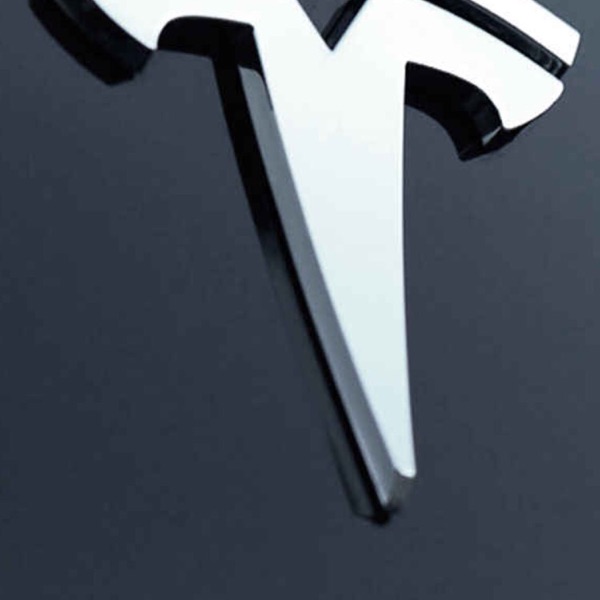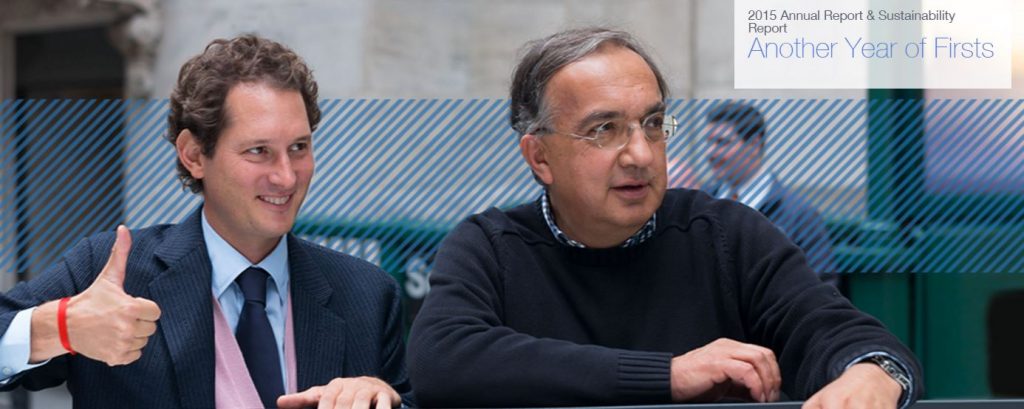News
Fiat Could Build Model 3 Rival in 12 Months Claims Its CEO
FiatChrysler chairman Sergio Marchionne said at the company’s annual meeting last Friday that if the Model 3 is profitable, Fiat could build a car like it with Italian styling in 12 months.


Sergio Marchionne at FCA annual meeting in Amsterdam on April 15. Credit: FCA
Sergio Marchionne, CEO of FiatChrysler, said during the company’s annual meeting in Amsterdam last Friday that if Tesla can make money on the Model 3, Fiat will build a competitor and have it on the market within 12 months. Those are brave words for a man whose Chrysler division is planning to stop making mid size sedans entirely.
Saying he has nothing but the highest regard for Elon Musk, Marchionne also said, “I am not surprised by the high number of reservations” (400,000 and counting) for the Model 3. “But then the hard reality comes in … making cars, selling them and making money doing so.”He added, if Elon “can show me that the car will be profitable at that price, I will copy the formula, add the Italian design flair, and get it to the market within 12 months.”
Unlike most car company CEOs, who tend to speak in measured terms, Marchionne has a reputation for blurting out whatever is on his mind. His remarks are viewed by many as proof that he has little to no understanding of how the automotive market is shifting beneath his feet.
They see him as the poster boy for how most automakers are still clueless about the electric car revolution and have no effective plans to join it. Several compare traditional car companies to the likes of Kodak and Polaroid — industry giants who simply could not adapt fast enough to digital photography tehcnology. IBM is another prime example of a once mighty company decimated by technological change.
Just a few years ago, Marchionne was begging people not to buy the Fiat 500e electric car because his company lost $14,000 on every car sold. Earlier last week, he told Automotive News that he sees Toyota, Ford, or Volkswagen as companies that could potential merge with FiatChryler. In other words, Marchionne is looking for a suitor who will buy the company while it still has value.
The decision to stop building the Dodge Dart and Chrysler 200 is instructive. By all accounts, both are pretty good cars that match up well against the competition. Neither has been particularly profitable, but the decision to stop making them is rooted in the arcane provisions of the federal regulations. Under the CAFE rules, the average fuel economy a company has to achieve varies according to the “footprint” of its fleet. The larger the vehicle it sells, the lower its CAFE numbers can be.
In this era of low gas prices, Chrysler is killing it with its Jeep lineup and sales of hulking pickup trucks. By ditching mid size sedans, it can sell more vehicles with atrocious gas mileage and be in compliance with CAFE mandates. At the very least, it will have to buy fewer credits from other companies. Does that sound like a company that it looking to the future?
There are so many problems with Marchionne’s position, it’s hard to know where to begin. The thought of a Model 3 clone that looks like an Alfa Romeo may have some surface appeal, but where is the network of recharging stations for customers travelling away from home? Where are the autonomous driving systems or the interior that will “feel like a spaceship,” in Elon’s words?
Is anyone at Tesla worried by Marchionne’s idle boast? If they are, they aren’t showing it.
Source: Fortune, Photo credit: FCA.com

News
Tesla FSD fleet is nearing 7 billion total miles, including 2.5 billion city miles
As can be seen on Tesla’s official FSD webpage, vehicles equipped with the system have now navigated over 6.99 billion miles.

Tesla’s Full Self-Driving (Supervised) fleet is closing in on almost 7 billion total miles driven, as per data posted by the company on its official FSD webpage.
These figures hint at the massive scale of data fueling Tesla’s rapid FSD improvements, which have been quite notable as of late.
FSD mileage milestones
As can be seen on Tesla’s official FSD webpage, vehicles equipped with the system have now navigated over 6.99 billion miles. Tesla owner and avid FSD tester Whole Mars Catalog also shared a screenshot indicating that from the nearly 7 billion miles traveled by the FSD fleet, more than 2.5 billion miles were driven inside cities.
City miles are particularly valuable for complex urban scenarios like unprotected turns, pedestrian interactions, and traffic lights. This is also the difference-maker for FSD, as only complex solutions, such as Waymo’s self-driving taxis, operate similarly on inner-city streets. And even then, incidents such as the San Francisco blackouts have proven challenging for sensor-rich vehicles like Waymos.
Tesla’s data edge
Tesla has a number of advantages in the autonomous vehicle sector, one of which is the size of its fleet and the number of vehicles training FSD on real-world roads. Tesla’s nearly 7 billion FSD miles then allow the company to roll out updates that make its vehicles behave like they are being driven by experienced drivers, even if they are operating on their own.
So notable are Tesla’s improvements to FSD that NVIDIA Director of Robotics Jim Fan, after experiencing FSD v14, noted that the system is the first AI that passes what he described as a “Physical Turing Test.”
“Despite knowing exactly how robot learning works, I still find it magical watching the steering wheel turn by itself. First it feels surreal, next it becomes routine. Then, like the smartphone, taking it away actively hurts. This is how humanity gets rewired and glued to god-like technologies,” Fan wrote in a post on X.
News
Tesla starts showing how FSD will change lives in Europe
Local officials tested the system on narrow country roads and were impressed by FSD’s smooth, human-like driving, with some calling the service a game-changer for everyday life in areas that are far from urban centers.

Tesla has launched Europe’s first public shuttle service using Full Self-Driving (Supervised) in the rural Eifelkreis Bitburg-Prüm region of Germany, demonstrating how the technology can restore independence and mobility for people who struggle with limited transport options.
Local officials tested the system on narrow country roads and were impressed by FSD’s smooth, human-like driving, with some calling the service a game-changer for everyday life in areas that are far from urban centers.
Officials see real impact on rural residents
Arzfeld Mayor Johannes Kuhl and District Administrator Andreas Kruppert personally tested the Tesla shuttle service. This allowed them to see just how well FSD navigated winding lanes and rural roads confidently. Kruppert said, “Autonomous driving sounds like science fiction to many, but we simply see here that it works totally well in rural regions too.” Kuhl, for his part, also noted that FSD “feels like a very experienced driver.”
The pilot complements the area’s “Citizen Bus” program, which provides on-demand rides for elderly residents who can no longer drive themselves. Tesla Europe shared a video of a demonstration of the service, highlighting how FSD gives people their freedom back, even in places where public transport is not as prevalent.
What the Ministry for Economic Affairs and Transport says
Rhineland-Palatinate’s Minister Daniela Schmitt supported the project, praising the collaboration that made this “first of its kind in Europe” possible. As per the ministry, the rural rollout for the service shows FSD’s potential beyond major cities, and it delivers tangible benefits like grocery runs, doctor visits, and social connections for isolated residents.
“Reliable and flexible mobility is especially vital in rural areas. With the launch of a shuttle service using self-driving vehicles (FSD supervised) by Tesla in the Eifelkreis Bitburg-Prüm, an innovative pilot project is now getting underway that complements local community bus services. It is the first project of its kind in Europe.
“The result is a real gain for rural mobility: greater accessibility, more flexibility and tangible benefits for everyday life. A strong signal for innovation, cooperation and future-oriented mobility beyond urban centers,” the ministry wrote in a LinkedIn post.
News
Tesla China quietly posts Robotaxi-related job listing
Tesla China is currently seeking a Low Voltage Electrical Engineer to work on circuit board design for the company’s autonomous vehicles.

Tesla has posted a new job listing in Shanghai explicitly tied to its Robotaxi program, fueling speculation that the company is preparing to launch its dedicated autonomous ride-hailing service in China.
As noted in the listing, Tesla China is currently seeking a Low Voltage Electrical Engineer to work on circuit board design for the company’s autonomous vehicles.
Robotaxi-specific role
The listing, which was shared on social media platform X by industry watcher @tslaming, suggested that Tesla China is looking to fill the role urgently. The job listing itself specifically mentions that the person hired for the role will be working on the Low Voltage Hardware team, which would design the circuit boards that would serve as the nervous system of the Robotaxi.
Key tasks for the role, as indicated in the job listing, include collaboration with PCB layout, firmware, mechanical, program management, and validation teams, among other responsibilities. The role is based in Shanghai.
China Robotaxi launch
China represents a massive potential market for robotaxis, with its dense urban centers and supportive policies in select cities. Tesla has limited permission to roll out FSD in the country, though despite this, its vehicles have been hailed as among the best in the market when it comes to autonomous features. So far, at least, it appears that China supports Tesla’s FSD and Robotaxi rollout.
This was hinted at in November, when Tesla brought the Cybercab to the 8th China International Import Expo (CIIE) in Shanghai, marking the first time that the autonomous two-seater was brought to the Asia-Pacific region. The vehicle, despite not having a release date in China, received a significant amount of interest among the event’s attendees.








